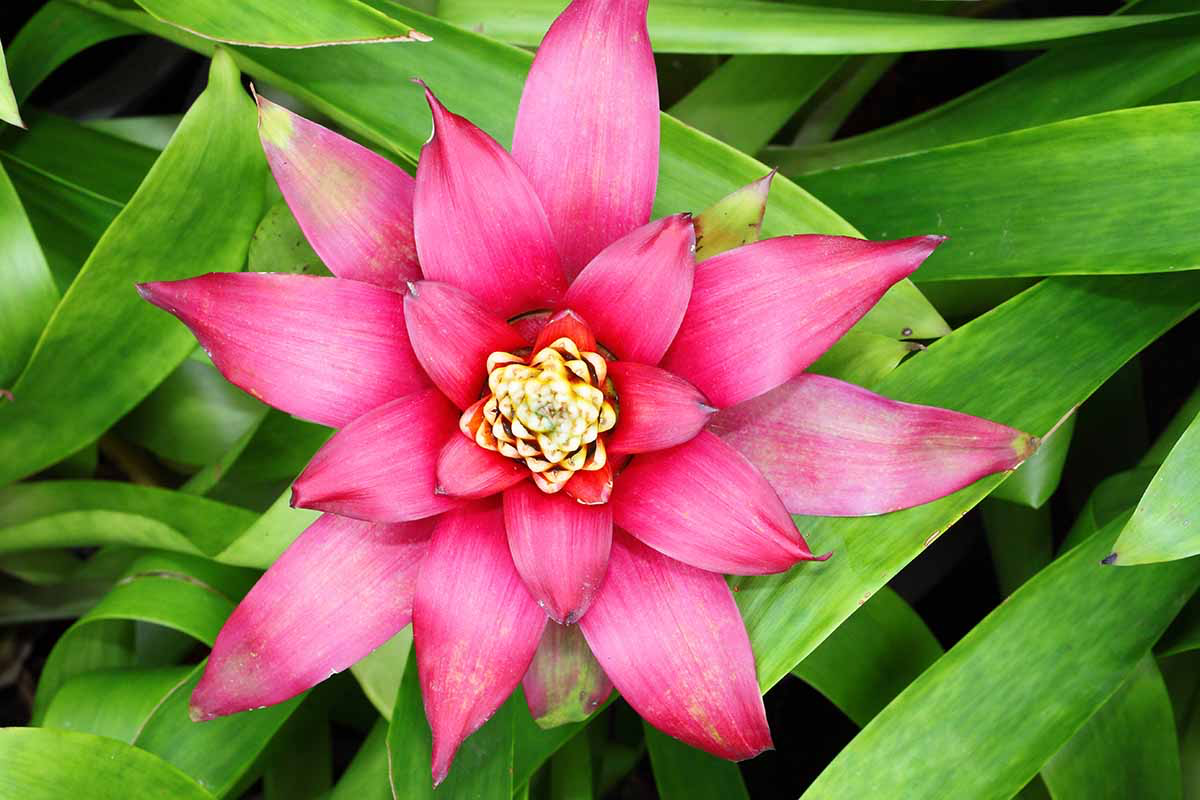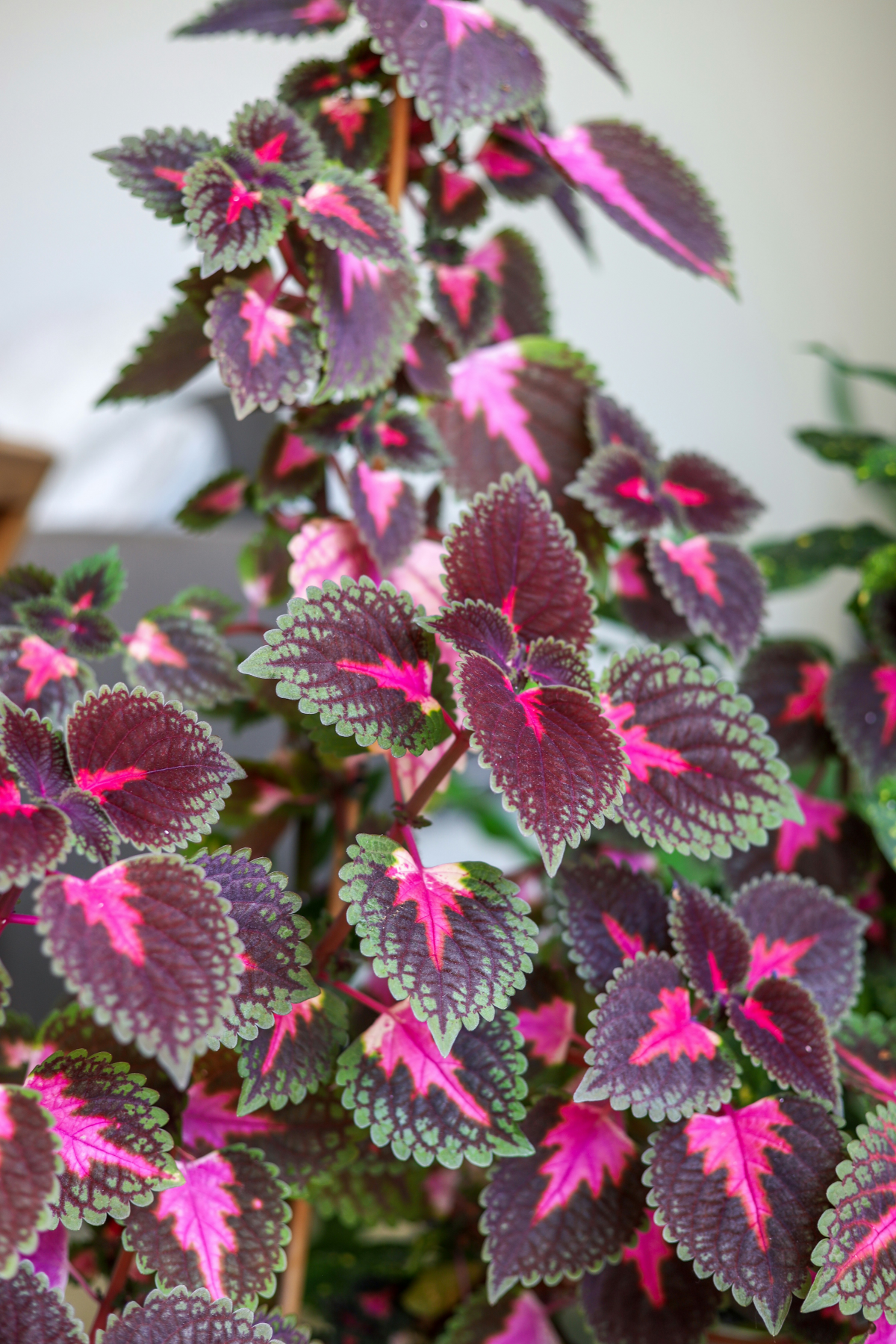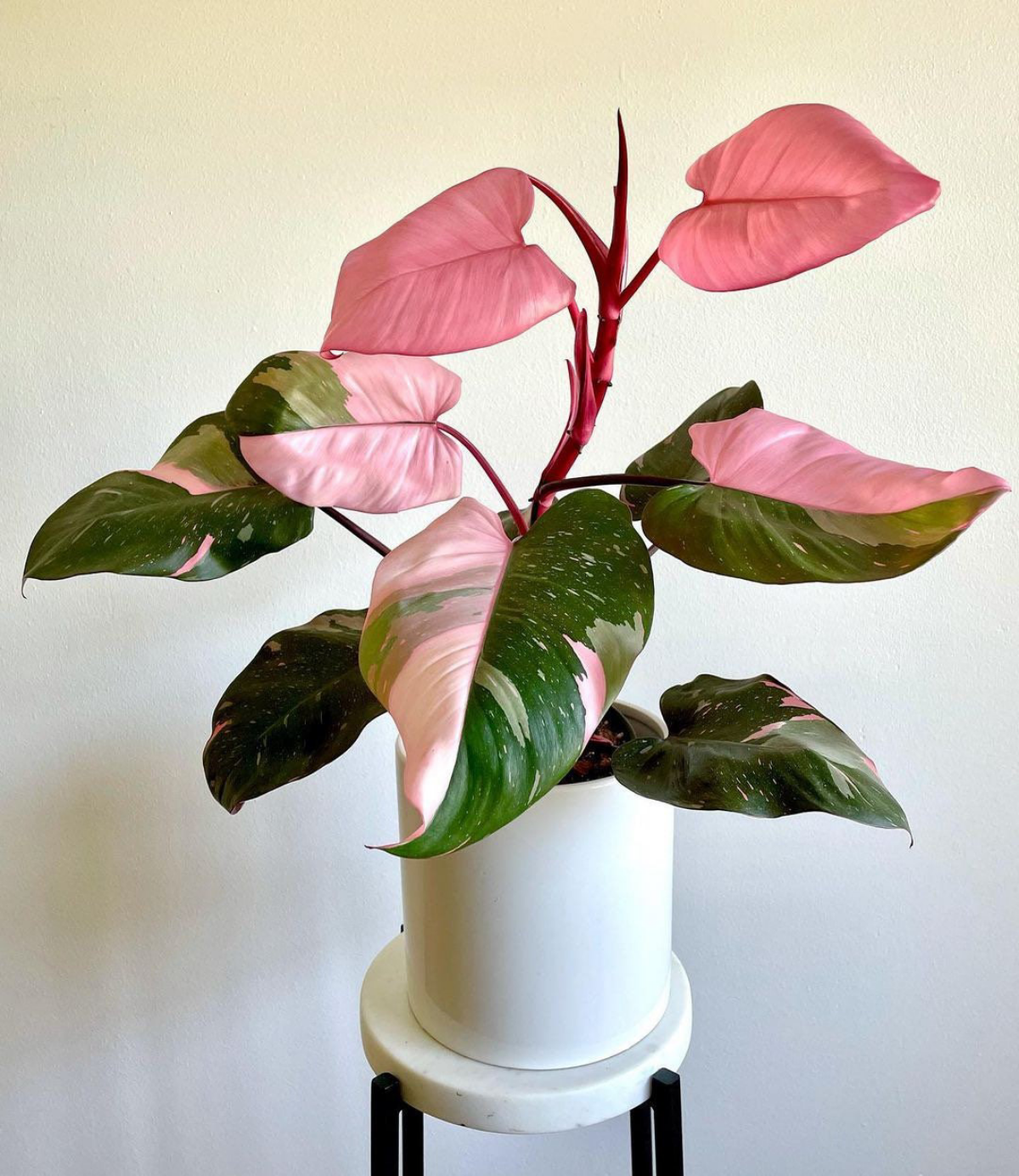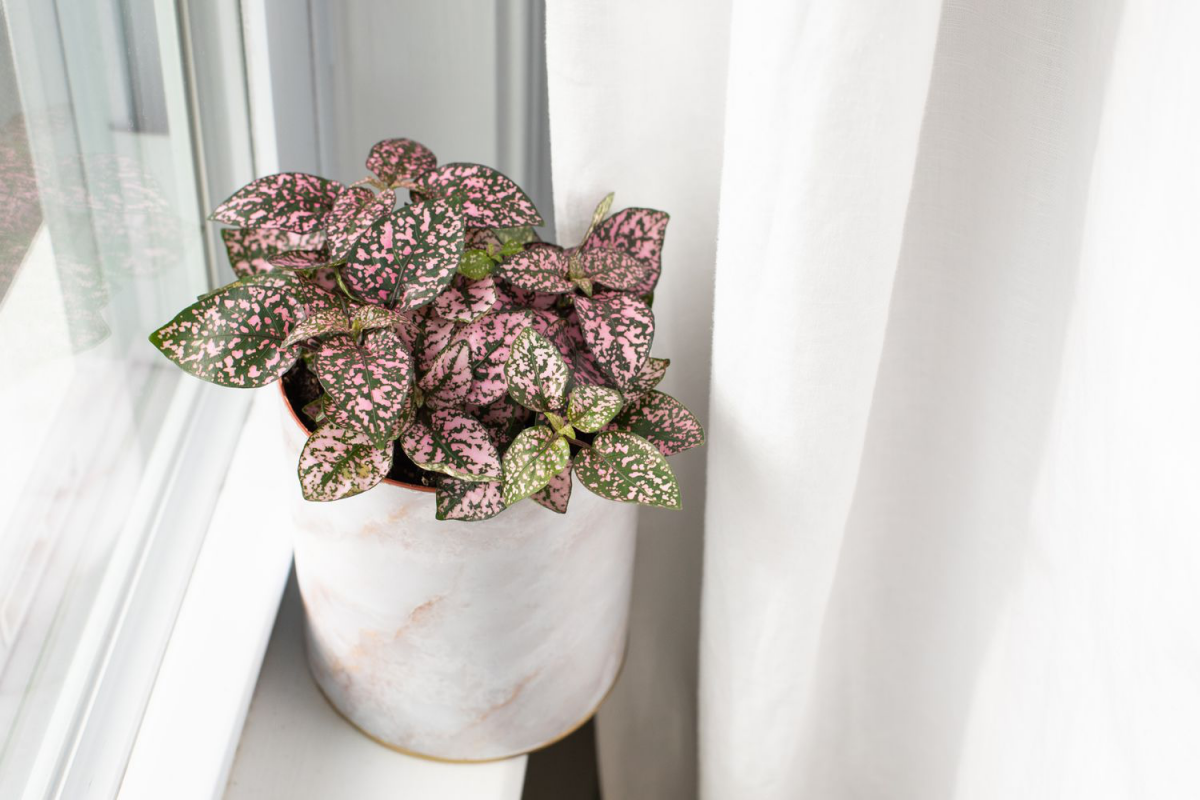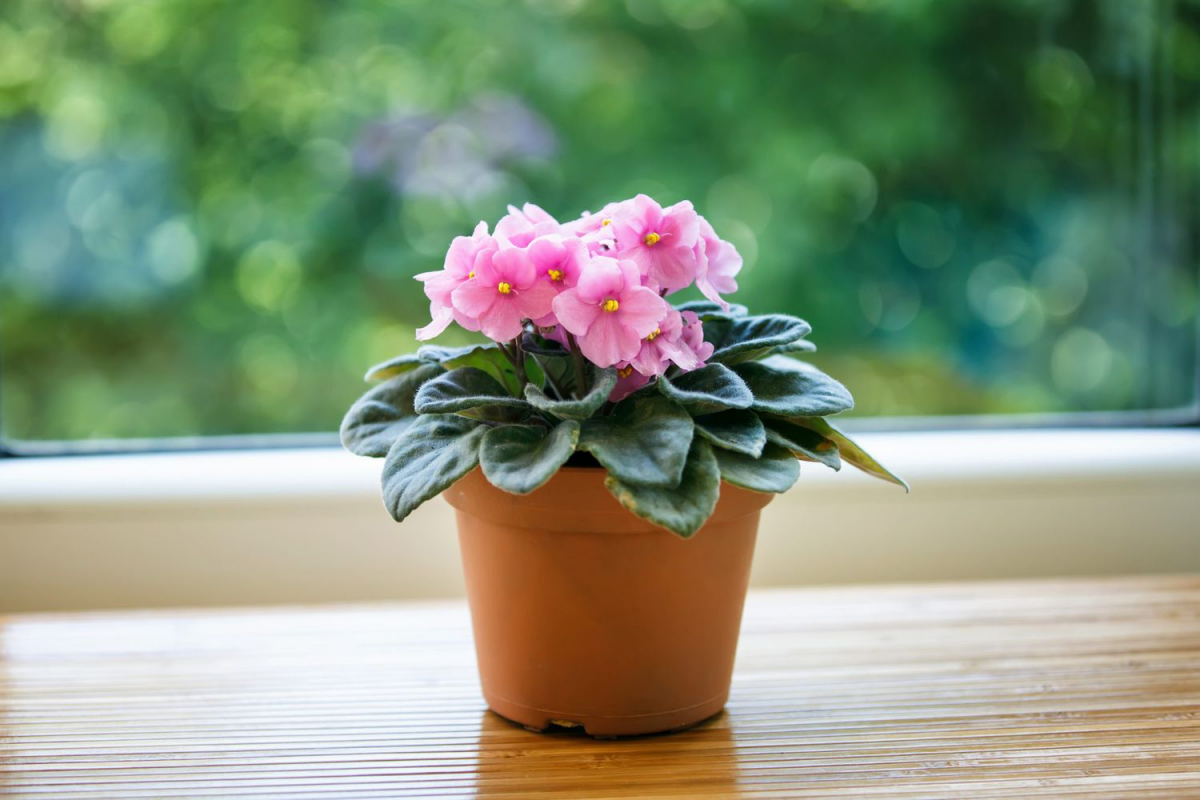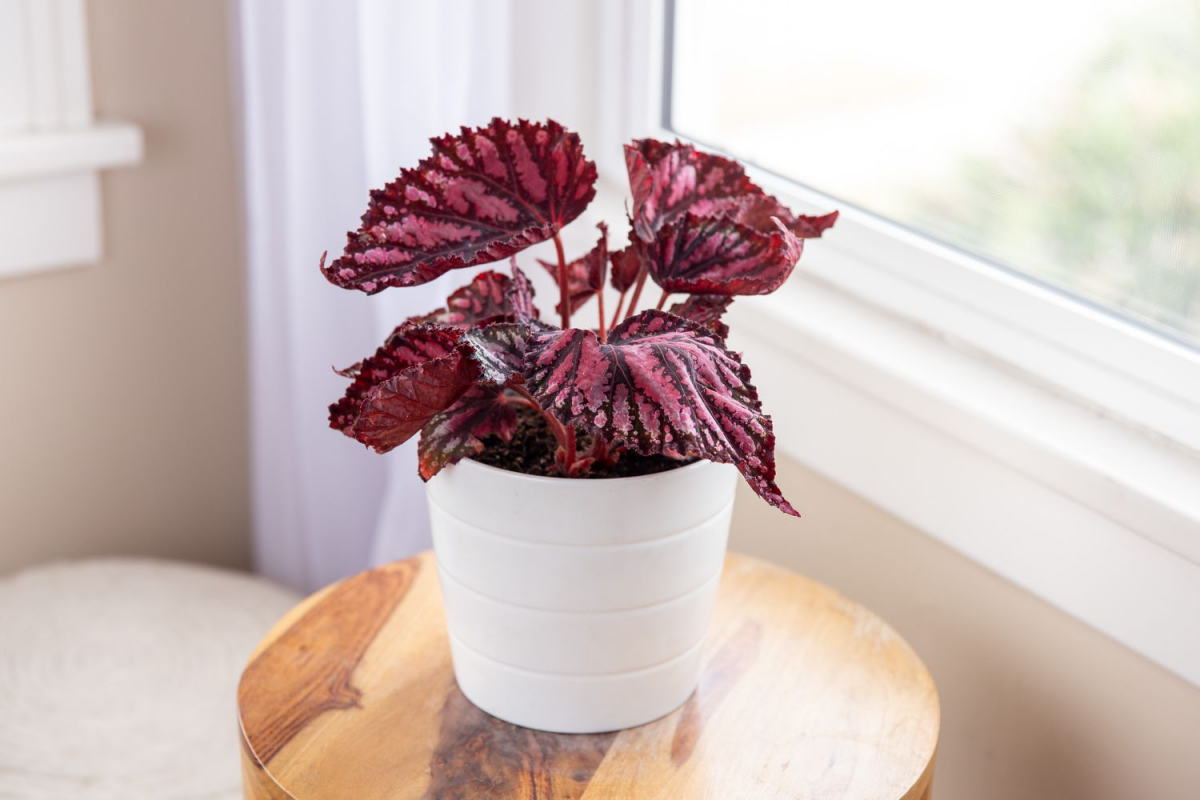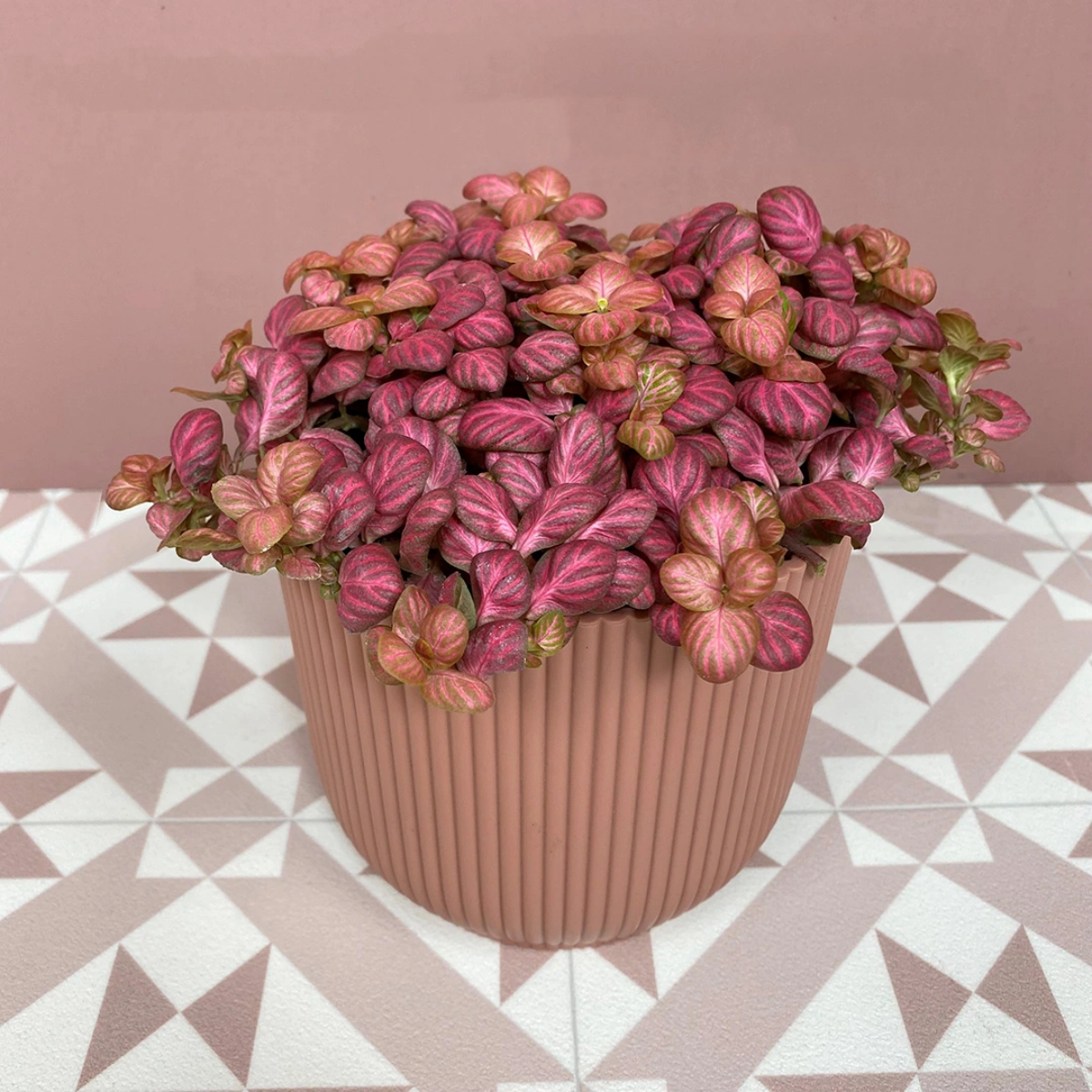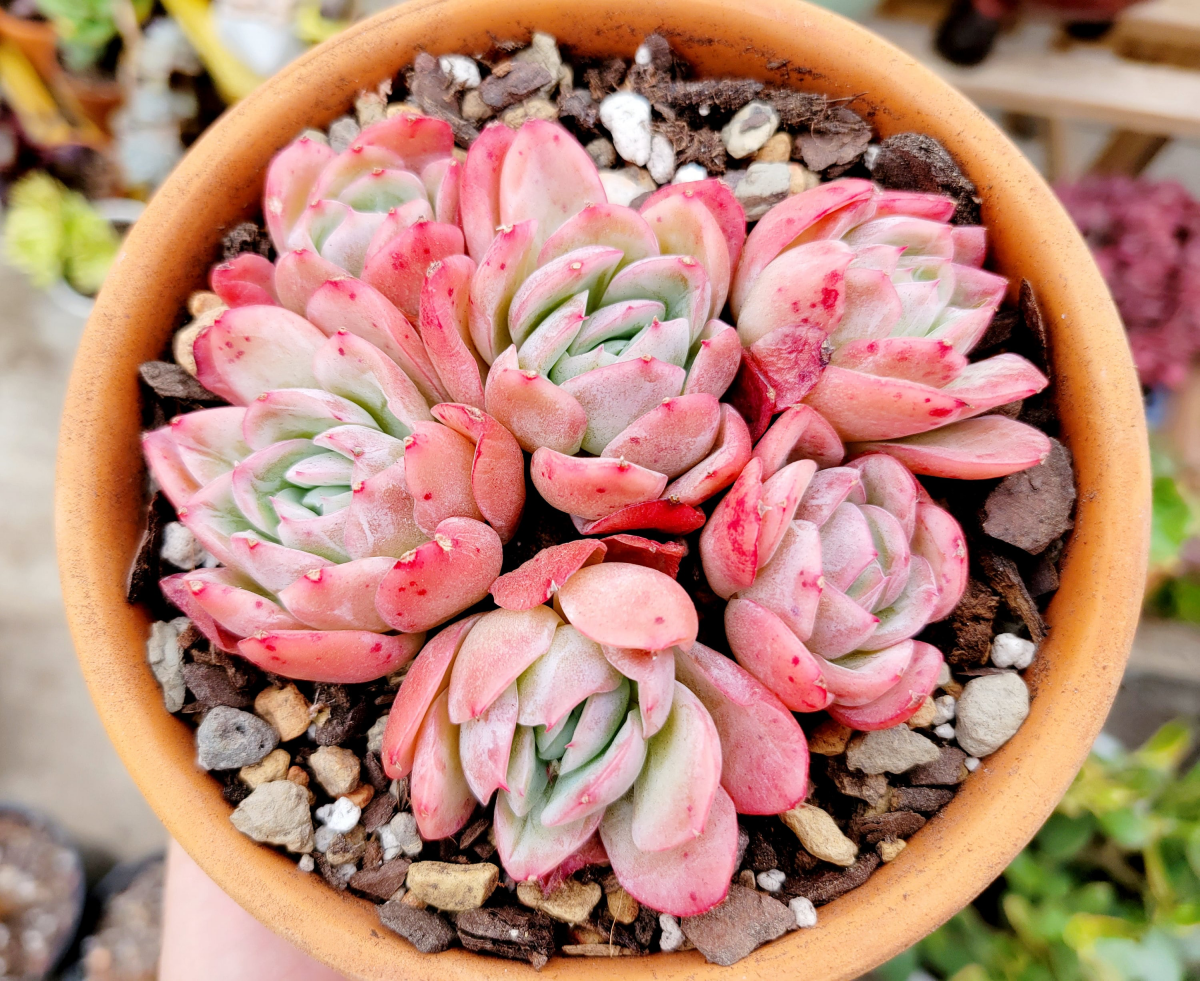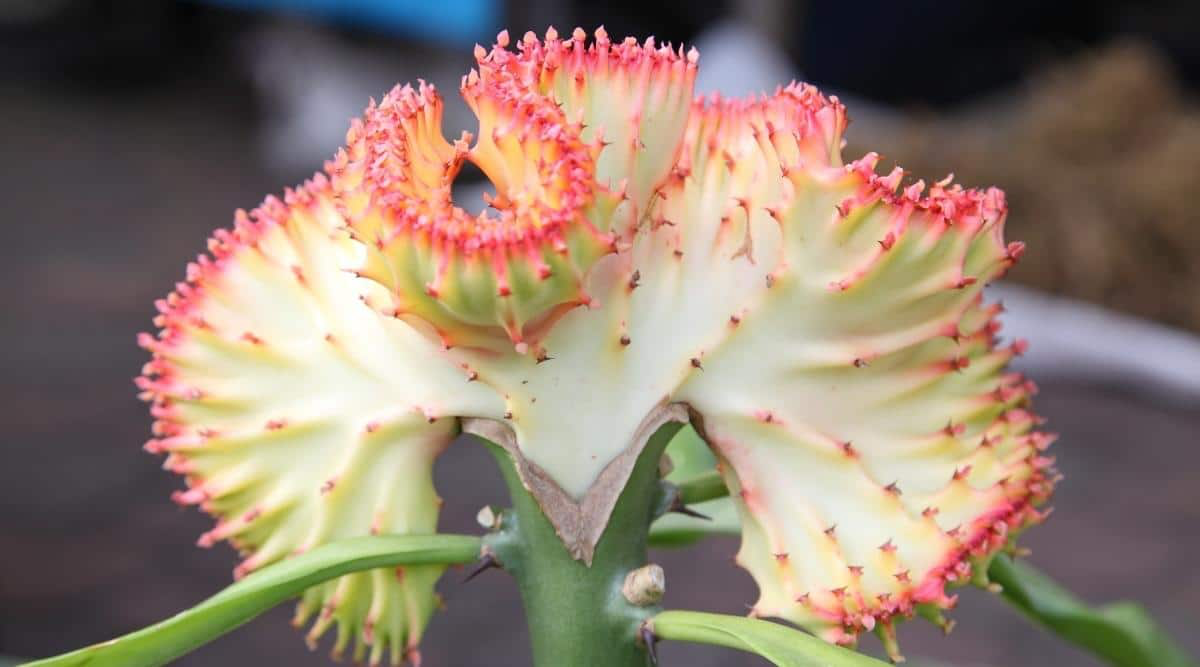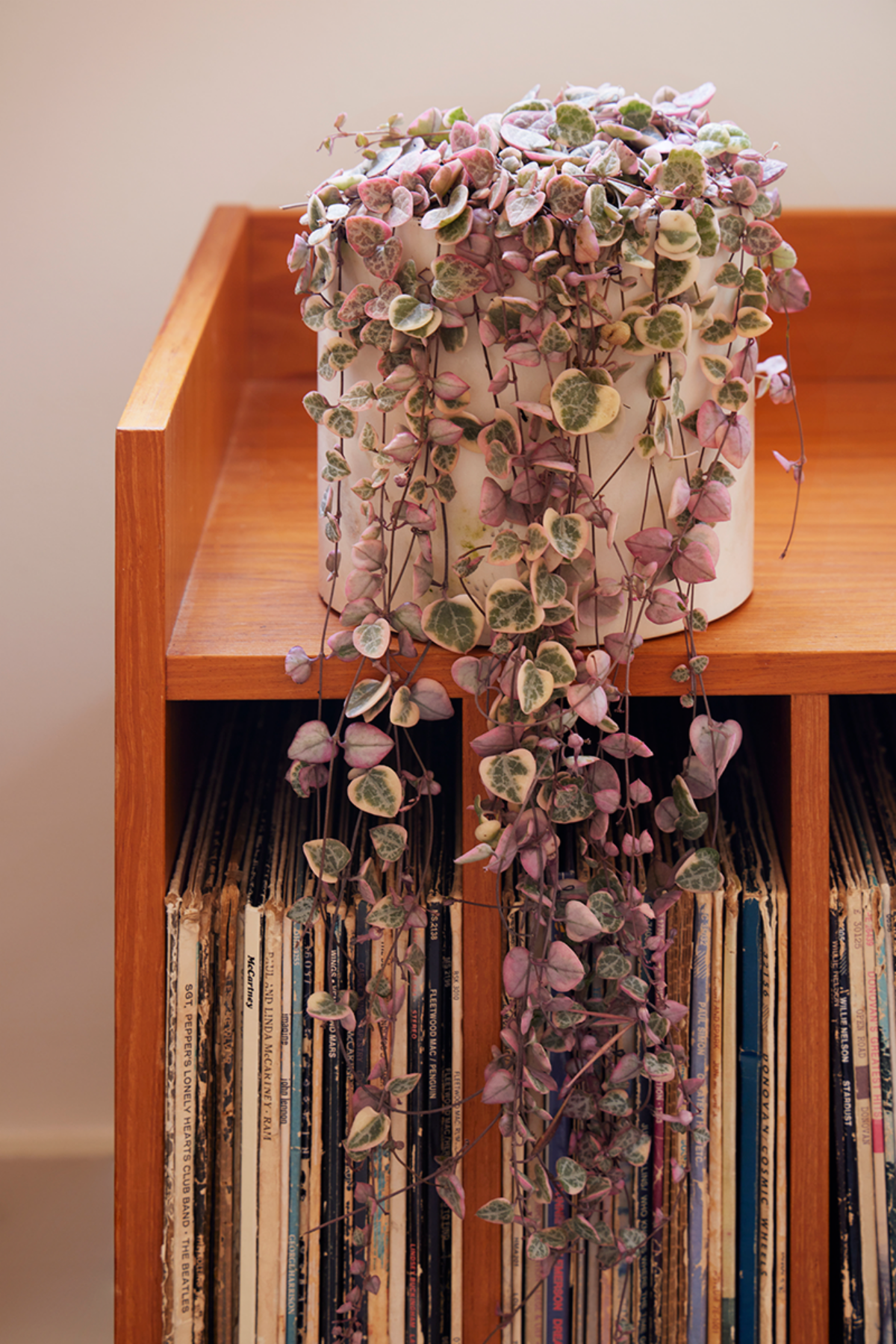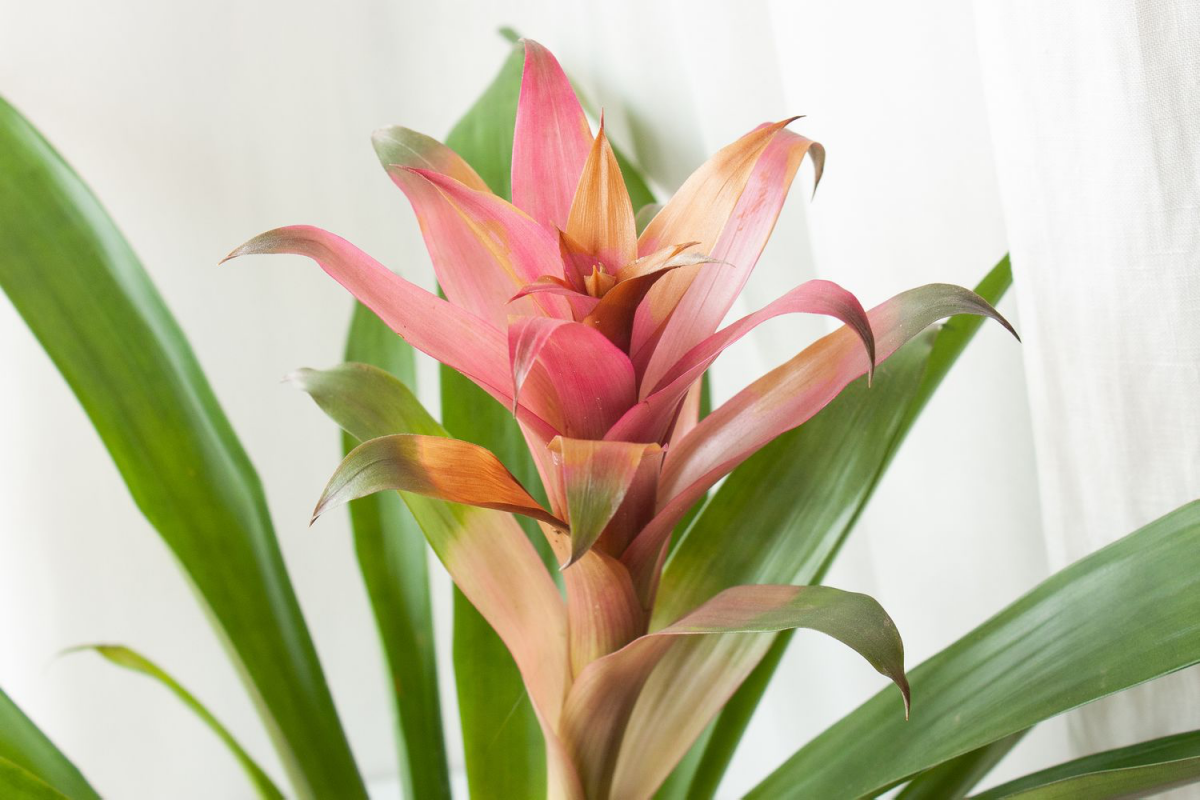15 Beautiful Pink Plants To Brighten Up Your Indoor Garden
As someone with an unapologetic love for all things vibrant and a penchant for bringing the outdoors in, my quest for adding a dash of color to my indoor garden led me down a path less trodden. Amid the sea of greens that filled my living space, I found myself yearning for something more—something that could truly make a statement. It was in this search for the perfect chromatic complement that my thoughts turned to a color often associated with whimsy and warmth: pink. The idea of infusing my indoor garden with a pink plant seemed not just appealing but necessary, like discovering the missing piece of a puzzle you didn’t know was incomplete. This exploration was not just about adding color; it was about creating an ambiance, a slice of Eden in my own home.
Embarking on a quest for the perfect pink plant turned my home into a vibrant Eden, echoing with whimsical hues
In this article
- How Do Plants Become Pink?
- Pink Plant Beauties
- Pink Princess Philodendron (Philodendron erubescens ‘Pink Princess’)
- Polka Dot Plant (Hypoestes phyllostachya)
- Calathea Roseopicta (Calathea roseopicta)
- Pink Quill Plant (Tillandsia cyanea)
- African Violet (Saintpaulia)
- Flamingo Flower (Anthurium)
- Rex Begonia (Begonia rex-cultorum)
- Pink Fittonia (Fittonia albivenis ‘Pink’)
- Pink Syngonium (Syngonium podophyllum ‘Pink’)
- Pink Muhly Grass (Muhlenbergia capillaris)
- ‘Cherry Blossom’ Succulent (Echeveria ‘Cherry Blossom’)
- Coral Cactus (Euphorbia lactea ‘Cristata’)
- Variegated String of Hearts (Ceropegia woodii variegata)
- Hoya ‘Krimson Queen’ (Hoya carnosa ‘Krimson Queen’)
- Bromeliad (Bromeliaceae)
How Do Plants Become Pink?
Diving into the world of botany to satisfy my curiosity, I uncovered fascinating insights into how plants get their mesmerizing colors. At the heart of this kaleidoscope lies chlorophyll, the pigment responsible for the green in leaves, performing the critical task of photosynthesis. However, the spotlight in our tale of hues is stolen by another group of pigments: anthocyanins. These are the architects behind the red, purple, and yes, pink colors we adore in plants. But does pink occur naturally? Absolutely. The presence of these pigments, combined with environmental factors and genetic makeup, gives rise to the delightful shades of pink that can make any plant aficionado’s heart skip a beat.
Who knew that the secret to pink plant paradise was hiding in a tiny pigment called anthocyanin?
Pink Plant Beauties
Embark with me as we delve into a curated selection of pink plants, each promising to be a visual feast and a testament to the unique beauty that nature offers. This journey isn’t just about adding a pop of color to your indoor garden; it’s about embracing a piece of the extraordinary, about transforming your living space into a vibrant tableau that reflects the whimsical and the wonderful. From the subtle blushes to the bold statements, the world of pink plants is a spectrum where every hue tells a story, every leaf a verse in the poetry of botany.
In the realm of pink plants, color is a secret dance between sunlight and science, revealing nature’s palette
Pink Princess Philodendron (Philodendron erubescens ‘Pink Princess’)
This royal beauty boasts dark green leaves elegantly variegated with splashes of bubblegum pink, making it a coveted specimen among plant enthusiasts. Thriving in bright, indirect sunlight, it requires well-draining soil and regular watering to maintain its vibrant appearance. The Pink Princess is a testament to nature’s playful side, perfect for adding a touch of regal whimsy to your indoor collection. Variegation fading can be an issue with insufficient light. Position it in a spot with bright, indirect light and rotate periodically to ensure even growth. Overwatering can lead to root rot, so let the top inch of soil dry out between waterings.
Join the royalty with a Pink Princess that refuses to let her crown wilt in the shadows
Polka Dot Plant (Hypoestes phyllostachya)
With its leaves playfully speckled with pink, the Polka Dot Plant adds a dash of fun to any room. It flourishes under medium to bright light and prefers its soil consistently moist, thriving with a bit of extra humidity. This plant’s cheerful appearance brings light-hearted charm to your indoor garden, making it an ideal choice for spaces that need a spark of joy. Fading color in low light situations. Ensure your plant receives enough light without direct sun exposure to keep the colors vivid. Overwatering or underwatering can cause leaf drop; maintain consistent soil moisture for optimal health.
Sprinkle some polka-dotted pink magic into your green jungle for a fun, speckled surprise
Calathea Roseopicta (Calathea roseopicta)
The Calathea Roseopicta, with its ornate leaves featuring painterly strokes of pink, is nothing short of a living masterpiece. Favoring indirect light and high humidity, this plant is as demanding as it is beautiful, requiring regular misting to stay vibrant. It’s perfect for those looking to add a touch of elegance and sophistication to their indoor oasis. Calatheas can struggle with crispy leaf edges if the air is too dry. Increase humidity through misting, pebble trays, or a humidifier. Avoid direct sunlight to prevent leaf burn and maintain consistent watering to keep the soil evenly moist.
Invite a masterpiece into your home with the Calathea Roseopicta, where every leaf is a brush stroke of pink brilliance
Pink Quill Plant (Tillandsia cyanea)
A stunning air plant, the Pink Quill Plant features a bright pink flower spike from which delicate purple flowers emerge. It thrives in bright, indirect light and requires occasional soaking and misting, making it an easy-care addition to your collection. Its exotic appearance adds an architectural element, ideal for modern and minimalist spaces. Sometimes the pink quill may not bloom if it’s not receiving enough light or if it’s overly wet. Ensure bright, indirect sunlight and let the plant dry out slightly between waterings. Mist occasionally for humidity without soaking the base.
Let the Pink Quill Plant architect your space with its air plant elegance and pops of purple blooms
African Violet (Saintpaulia)
Beloved for its velvety leaves and vibrant pink blooms, the African Violet is a classic choice for indoor gardeners. It prefers bright, indirect light and consistent moisture, with careful watering at the base to avoid leaf spot. This plant is perfect for adding a continuous pop of color, as it blooms several times a year with proper care. Overwatering can lead to root rot, while underwatering can cause wilting. Use room-temperature water and ensure good drainage. Keep leaves dry to prevent spots. Place in a location with indirect sunlight and provide consistent moisture.
Transform your indoor garden into a pink bloom festival with the ever-charming African Violet
Flamingo Flower (Anthurium)
With its glossy leaves and striking pink spathes, the Flamingo Flower is a tropical beauty that adds elegance to any room. It enjoys high humidity, bright, indirect light, and regular watering, making it a fitting choice for bathrooms or kitchens. The Flamingo Flower’s long-lasting blooms make it a gift that keeps on giving. Anthuriums can suffer from leaf yellowing if overwatered or placed in low light. Water only when the top inch of soil feels dry and ensure plenty of indirect light. Boost humidity levels to keep the spathe vibrant.
Why visit the tropics when the Flamingo Flower brings the essence of tropical pink splendor right to your living room?
Rex Begonia (Begonia rex-cultorum)
Rex Begonias boast stunning leaves with shades of pink, silver, and green. They prefer moist, well-draining soil and moderate to bright indirect light. With their dramatic foliage, Rex Begonias are perfect for adding texture and color, ideal for plant enthusiasts looking to diversify their indoor garden. Rex Begonias can be prone to mildew if the leaves remain wet or the air circulation is poor. Water the soil directly, avoiding the leaves, and place in an area with good airflow. They also require high humidity, so consider using a pebble tray or humidifier.
Dive into the Rex Begonia’s world, where leaves are more about pink drama than green peace
Pink Fittonia (Fittonia albivenis ‘Pink’)
Also known as the Nerve Plant, the Pink Fittonia features striking pink veins against a dark green backdrop. It thrives in low to medium light and loves humidity, making it a great terrarium plant. Its low-growing habit and vibrant foliage make it an excellent choice for tabletops and desks. Fittonias can easily wilt if the soil dries out too much, but they bounce back quickly with watering. Keep the soil consistently moist and provide high humidity to prevent leaf droop. Avoid direct sunlight to keep the colors bright.
Navigate the veins of the Pink Fittonia as they map out the path to indoor gardening bliss
Pink Syngonium (Syngonium podophyllum ‘Pink’)
The Pink Syngonium offers arrow-shaped leaves that transition from green with pink accents to almost fully pink as they mature. It enjoys moderate light and regular watering, making it a versatile addition to any indoor space. Its easy-going nature and evolving colors make it a favorite among new and seasoned plant lovers alike. Leggy growth and fading leaf color can occur in low light. Provide bright, indirect light to encourage vibrant foliage. Overwatering can lead to root rot, so let the topsoil dry out slightly between waterings.
Watch the Pink Syngonium gently remind us that change is beautiful, one leaf at a time
Pink Muhly Grass (Muhlenbergia capillaris)
While not a traditional houseplant, Pink Muhly Grass can be grown indoors in containers where it receives plenty of light. This grass is known for its billowy pink plumes that add a soft, ethereal quality to the indoor garden. It requires well-draining soil and occasional watering, making it a low-maintenance option for adding texture. Adequate light indoors is crucial; without it, the grass won’t produce its signature pink plumes. Position it near a south-facing window or supplement with grow lights. Water sparingly, as its drought tolerance means it can easily be overwatered.
Let the ethereal waves of Pink Muhly Grass sweep you away to a dreamy, pink-tinged landscape
‘Cherry Blossom’ Succulent (Echeveria ‘Cherry Blossom’)
This succulent variety features rosettes with pink-tipped leaves, reminiscent of cherry blossoms. It thrives in bright light and requires minimal watering, making it an ideal choice for sunny windowsills. Its drought-tolerant nature and charming appearance make it a must-have for succulent collectors. Echeverias need plenty of light to maintain their color and compact form. Inadequate light leads to etiolation (stretching). Rotate the plant for even light exposure and water when the soil is completely dry.
Cherry Blossoms in your garden year-round? Yes, please, with a side of succulent resilience
Coral Cactus (Euphorbia lactea ‘Cristata’)
Though not a true cactus, the Coral Cactus boasts a fan-shaped crest that varies in color, including shades of pink. It prefers bright, indirect light and sparse watering, making it a striking, low-maintenance addition. Its unique form and texture add an artistic touch to any collection. The main issue is overwatering, which can rot the stem. Ensure the potting mix is well-draining and only water when the soil is dry. Protect from direct sunlight to prevent scorch marks on the delicate crest.
Add a twist of the unexpected with the Coral Cactus, where pink crests wave like the ocean’s own
Variegated String of Hearts (Ceropegia woodii variegata)
This trailing plant features heart-shaped leaves with pink variegation. It’s perfect for hanging baskets, thriving in bright, indirect light and requiring watering only when dry. Its delicate, cascading vines bring a whimsical charm to any indoor space. Variegated String of Hearts can become leggy or lose variegation without enough light. Place in bright, indirect light and allow the top inch of soil to dry out between waterings to encourage healthy growth and vibrant leaf color.
Let the Variegated String of Hearts dangle delicate love notes across your indoor sanctuary
Hoya ‘Krimson Queen’ (Hoya carnosa ‘Krimson Queen’)
Admired for its variegated leaves edged in pink and clusters of star-shaped pink flowers, this Hoya is a standout. It enjoys bright, indirect light and occasional watering, making it a resilient and decorative choice. Its vining nature and fragrant blooms add beauty and fragrance. Hoyas prefer not to be overwatered. Wait until the soil is dry before watering again. They also need bright, indirect light to bloom. If not flowering, consider moving to a brighter spot but avoid direct sun that can scorch leaves.
Crown your garden with the Hoya ‘Krimson Queen’, where pink borders rule with a fragrant reign
Bromeliad (Bromeliaceae)
Bromeliads offer a variety of pink-hued options, with striking flowers that can last for months. They prefer bright, indirect light and minimal water, making them easy to care for. Their bold, architectural forms and vibrant colors make them focal points in any indoor garden. romeliads can suffer if watered improperly. Fill the central cup of the plant instead of the soil and empty it monthly to prevent rot. They enjoy bright, indirect light; too much direct sunlight can fade the colors.
Step into the Bromeliad’s pink ring, where the fight for the boldest bloom never ends
Venturing into the realm of pink plants has not only expanded my indoor garden’s palette but also enriched my connection with nature. Each plant, with its unique shade of pink and individual care needs, tells a story and adds a layer of depth to the home. Inviting these living hues into your space is more than just gardening; it’s curating your own personal oasis, a sanctuary that resonates with your aesthetic and vibrates with life. So, whether you’re a seasoned green thumb or a budding plant enthusiast, consider painting your plant collection pink. After all, every indoor garden deserves a touch of magic, and what better way to sprinkle it than with shades of pink?
Incorporating pink plants into your home is like painting your indoor world with nature’s most playful hues
